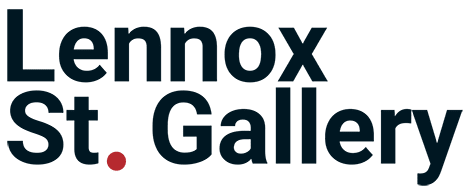The Milk Bars Are On Me: Donovan Christie
The history of corner stores in Australia has become a specialist area of scholarly enquiry. It has demonstrated, times and times again, how these small local institutions are inextricably intertwined with the history of the country.
The history of corner stores in Australia has become a specialist area of scholarly enquiry. It has demonstrated, times and times again, how these small local institutions are inextricably intertwined with the history of the country.
Based on an American model and imported as a concept store into Australia in the early twentieth century, milk bars gained in popularity not the least because they offered a valid alternative to the traditional pubs, with the absence of restrictions on age, gender, and race. Onsite dwellings, either at the rear or on the top of the store, made them popular as small family-run businesses, nurtured and passed down through generations, acquiring in the process individuality, conviviality, and consistency of products and services.
From the 1930s, and especially following the Second World War, the corner stores became a haven for European migrants, who took over them in turn as family-run enterprises. For a wider community of European migrants, these stores offered the Aladdin’s cave of continental delicacies not yet available from general grocers. They also became as close as Australia came at that point to the European café society, offering refreshments, gossip, foreign language newspapers, and a sense of belonging for Australia’s increasingly diverse, multi-cultural community.
The next important change occurred from the 1960s with the influx of Asian migrants, who, like their European predecessors, inventoried the stores with Asian delicacies, and provided in turn a safe environment where other migrants of similar backgrounds could buy familiar groceries, grab a newspaper, catch up on the news, or indulge in a spot of gossip in their native tongues.
An increasing competition from round-the-clock multinational convenience stores, late-night-shopping supermarkets, and, more recently, the convenience of home deliveries impacted the long-term viability of the Milk Bars. Though, thankfully, only temporarily. We are experiencing a resurgence in interest and attachment to the humble local corner store, which continues providing a point of difference to the multinationals with a greater cross-section of produce as well as more personalised services.
The ongoing attachment to milk bars and their layered significance within Australian vernacular is reflected aptly in Donovan Christie’s exhibition, The Milk Bars Are On Me. “Just think of it: with a handful of shrapnel in our pockets, we would jump on our bikes and go to the nearest corner store for hot chips and a drink, with enough left over for a handful of lollies,” says Donovan with a far-away look, and a mixture of wistfulness and nostalgia in his voice.
The memories of simpler (as well as safer and more innocent) times have inspired Donovan’s artistic investigation, which continues evolving in the present exhibition. Always conscious of his audiences, Donovan switched his focus within the context of the current exhibition from his native Adelaide to suburban Melbourne, researching meticulously corner stores and capturing them in his increasingly detailed, photorealistic, and atmospheric canvasses.
Many of his works recreate his sites of affection in great detail, capturing the essence of the ongoing appeal of milk bars. The bright primary colours stand out clearly from the suburban landscape, generally dominated by muted greys of the pavements, dark greens of backyard shrubbery, and pale blues of the floating cloudscapes. In the dusk, the stores emit a warm glow, cathedral-like, enticing visitors from far and wide as a refuge from hunger, thirst, and nature’s elements.
Donovan does not idealise milk bars but captures them ‘warts andall.’ Some are lovingly restored, preserving the purity and elegance of their original art deco facades or the later, more utilitarian, plated-glass frontages. Many bear exterior ‘embellishments’ in the form of graffiti. In a candid conversation, Donovan confesses to having had in his pockets (apart from loose change), a spray can or two, adding surreptitiously to the exterior décorof these establishments—though out of an impulse not to deface, but, rather, leave his mark in and on society. The presence of graffiti furthers the self-reflexive, autobiographical aspect of the exhibition, referencing Donovan’s erstwhile foray into the art world as a graffiti artist.
An important part of the exhibition consists of Donovan’s re-imaging of popular product lines, which, just like milk bars themselves, bear important childhood attachments and associations, and are increasingly consigned to the relics of the past. Designed as brand logos to be readable and instantly recognisable to people from a multitude of cultural backgrounds and languages, they appear somewhat faded, slightly worn, weathered by the elements, and yet still highly legible. The addition of large scale painted sculpture versions of the iconic Tazo’s, Oddbodz and The Simpsons trading cards illustrate the continuous evolution and entrance into the marketplace of the newer brands and pop culture, which, in time, acquire the iconicity and nostalgic appeal of their marketing forebears.
The Milk Bars Are On Me, as a concept, is best described as a Gesamtkunstwerk, incorporating paintings, installations, and interactive, participatory performance. The spirit of Pop Art shines forth as Donovan revels in bringing the everyday into the realm of ‘high art’ and the gallery environment. The Warholian irreverent brand fetish is tempered by Rosenquist’s bold cropping, foreshadowing the social media’s unforgiving subjugation of images to a predetermined format of uniform templates. The meticulous attention to detail and a nuanced complexity of the colour palette, resulting in an enhanced perception of three-dimensionality and illusory depth, position the young artist’s streetscapes, ‘still lifes’ of products, and faded ghost signs at the forefront of Estes’ and Cottingham’s photorealist tradition.
Though conceived in 2019, the exhibition has attained a greater relevance today, as, after the months of lockdowns and isolation, local milk bars and corner stores have regained their place as acknowledged epicentres of local cohesion and social renewal.
- Dr. Eugene Barilo von Reisberg, 2022





